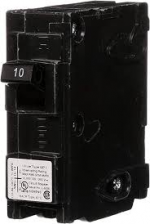jetlag
Senior Member
- Location
- Eatonton, Georgia
Is this a valid method to determine the number of 15 amp general purpose receptacles and lighting circuits required for a dwelling ? All you do is multiply the number of square ft in the house by 3 VA per sq ft , and then divide the total by 1800 Va and that gives you the number 14 gauge 15 amp circuits . I know people use that method for figuring the service demand be I never thought it was enough for each branch circuit . For example : if a dwelling had 4 small bedrooms , 150 sq ft each that would be 600 sq ft . if you multiply 600 by 3va = 1800 Va . That means you could put all the gen purpose receptacles an lights in all 4 bed rooms on one 15 amp circuit . That just does not seem right to me . ' I'm not talking about the other rooms right now or where the 20 amp circuits are required , just the 4 bedrooms .


